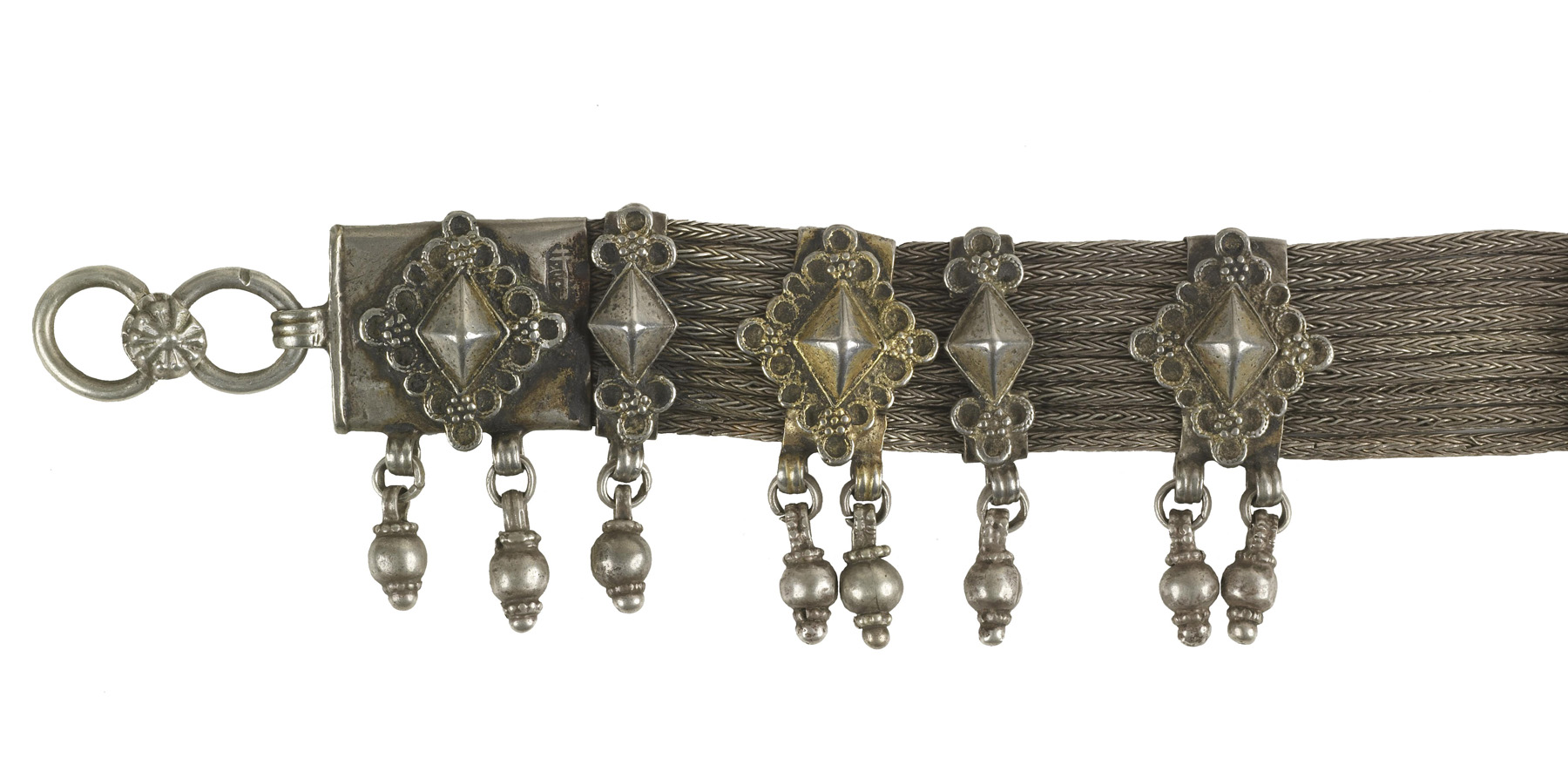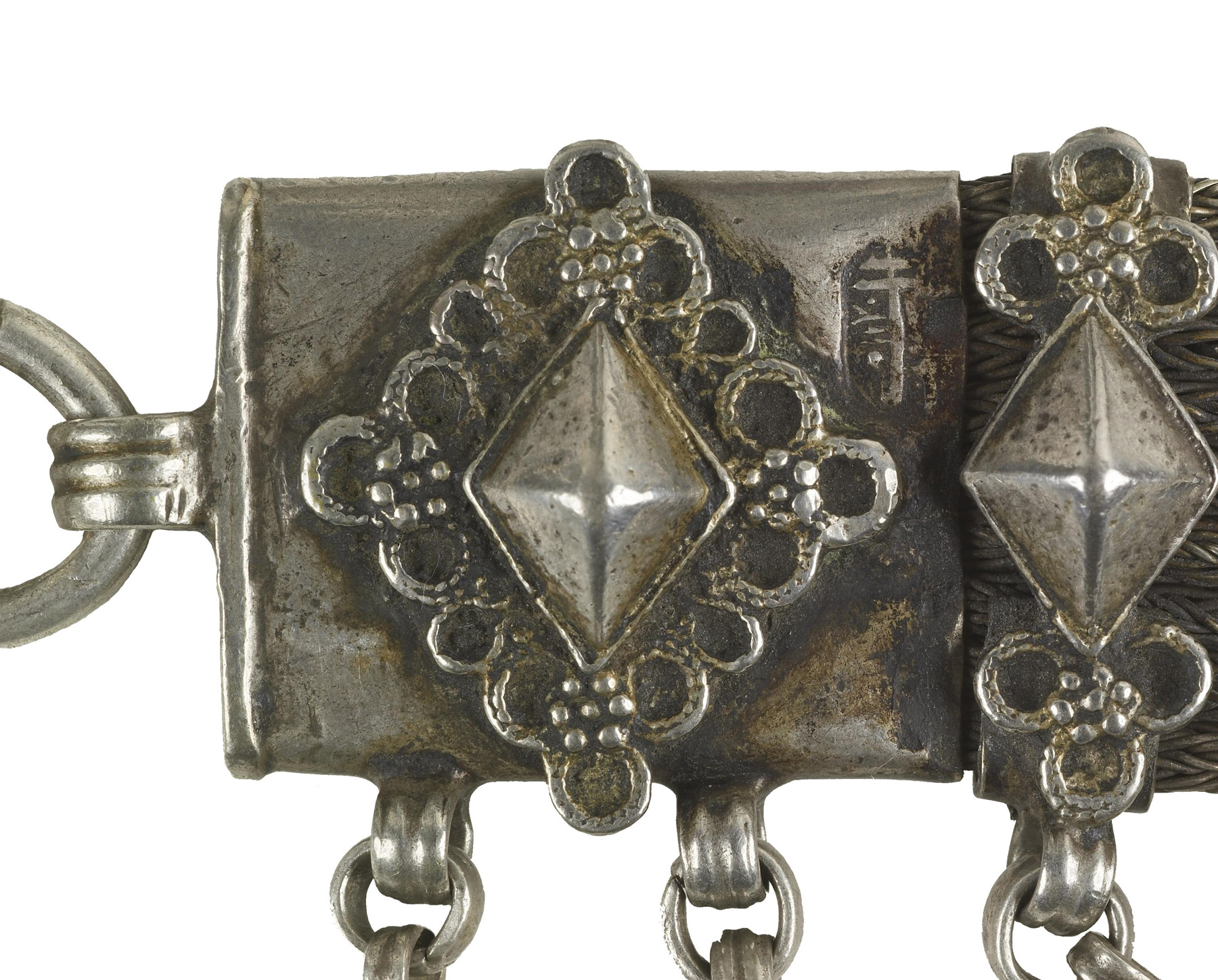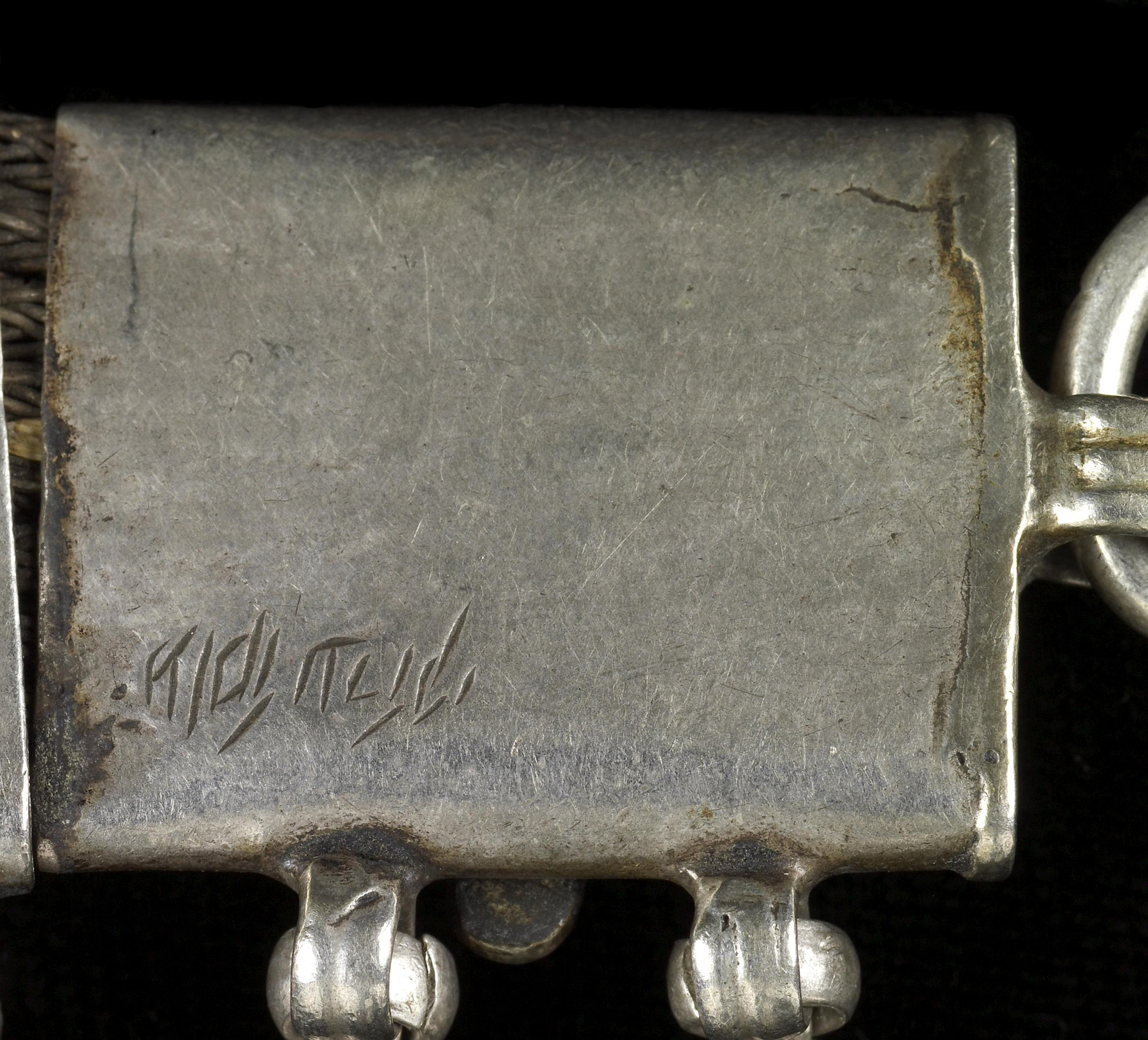Woman's Belt
The girdle is made of a flexible, interlace mesh and has eleven movable retainers with large rhombic attachments, each with two tear-shaped pendants, and twelve
retainers with smaller rhombic attachments, each with one pendant. All attachments were cast. Small rings and rosettes frame the large rhombic elements, and three-ring motif with burling rosettes accompany the smaller ones at their top and bottom. The clasps are also decorated with a large rhombic elements. A wire shaped in a figure-eight with a rosette is used as a closing element.
On the front of the clasps is an Arabic stamp with the name of the ruler and a date: al-Mahdi 1170. The similarity to stamps of al-Mahdi al-"Abbas makes it likely that the
pendants were produced under his reign from AH 1161 to 1189 (AD 1748-1775).
An engraved inscription on the back of the clasp names the silversmith: Musa "Iraqi. For another object by Musa "Iraqi, see Walters 57.2321.
Inscription
Provenance
Provenance (from the French provenir, 'to come from/forth') is the chronology of the ownership, custody, or location of a historical object. Learn more about provenance at the Walters.
Mr. Derek Content and Mr. Benjamin Zucker [Zucker Family Trust] London and New York, by purchase; Walters Art Museum, 2010, by gift.
Exhibitions
| 2016-2017 | Treasures of Yemenite Silverwork. The Israel Museum, Jerusalem, Jerusalem. |
| 2012-2013 | Diadem and Dagger: Jewish Artisans of Yemen. The Walters Art Museum, Baltimore. |
Geographies
Yemen (Place of Origin)
Measurements
L: 34 x W: 1 in. (86.3 x 2.6 cm)
Credit Line
Joint gift to the Walters Art Museum, Baltimore, and the Israel Museum, Jerusalem, by Mr. Derek Content and Mr. Benjamin Zucker in honor of Mrs. Amanda Content and Mrs. Barbara Zucker, 2010
Location in Museum
Not on view
Accession Number
In libraries, galleries, museums, and archives, an accession number is a unique identifier assigned to each object in the collection.
In libraries, galleries, museums, and archives, an accession number is a unique identifier assigned to each object in the collection.
57.2325








